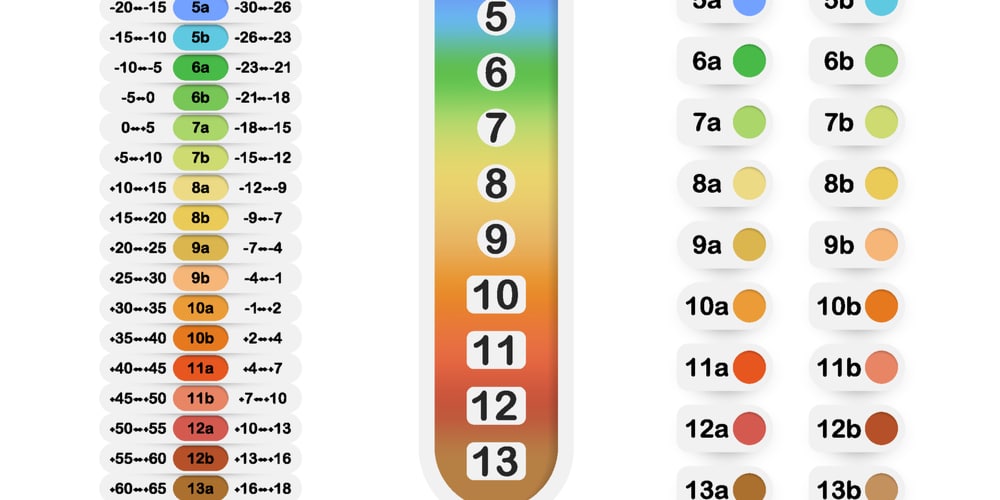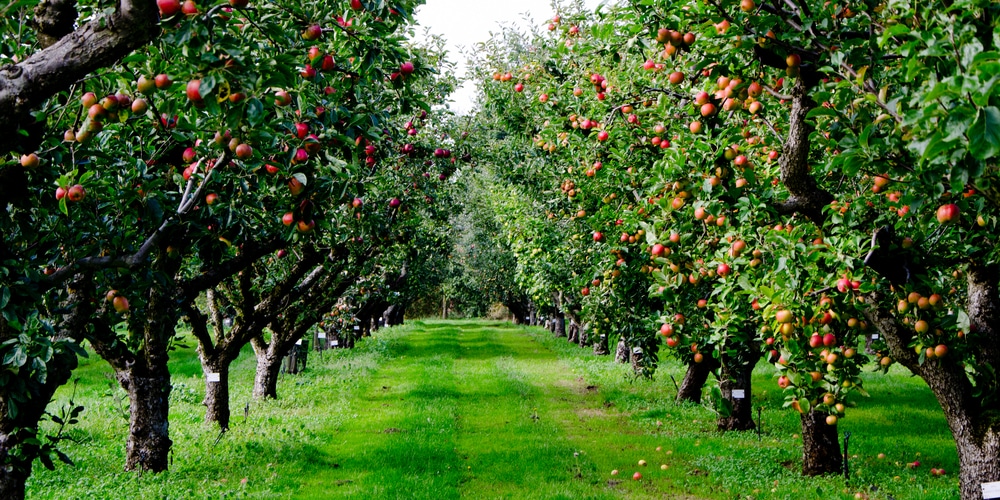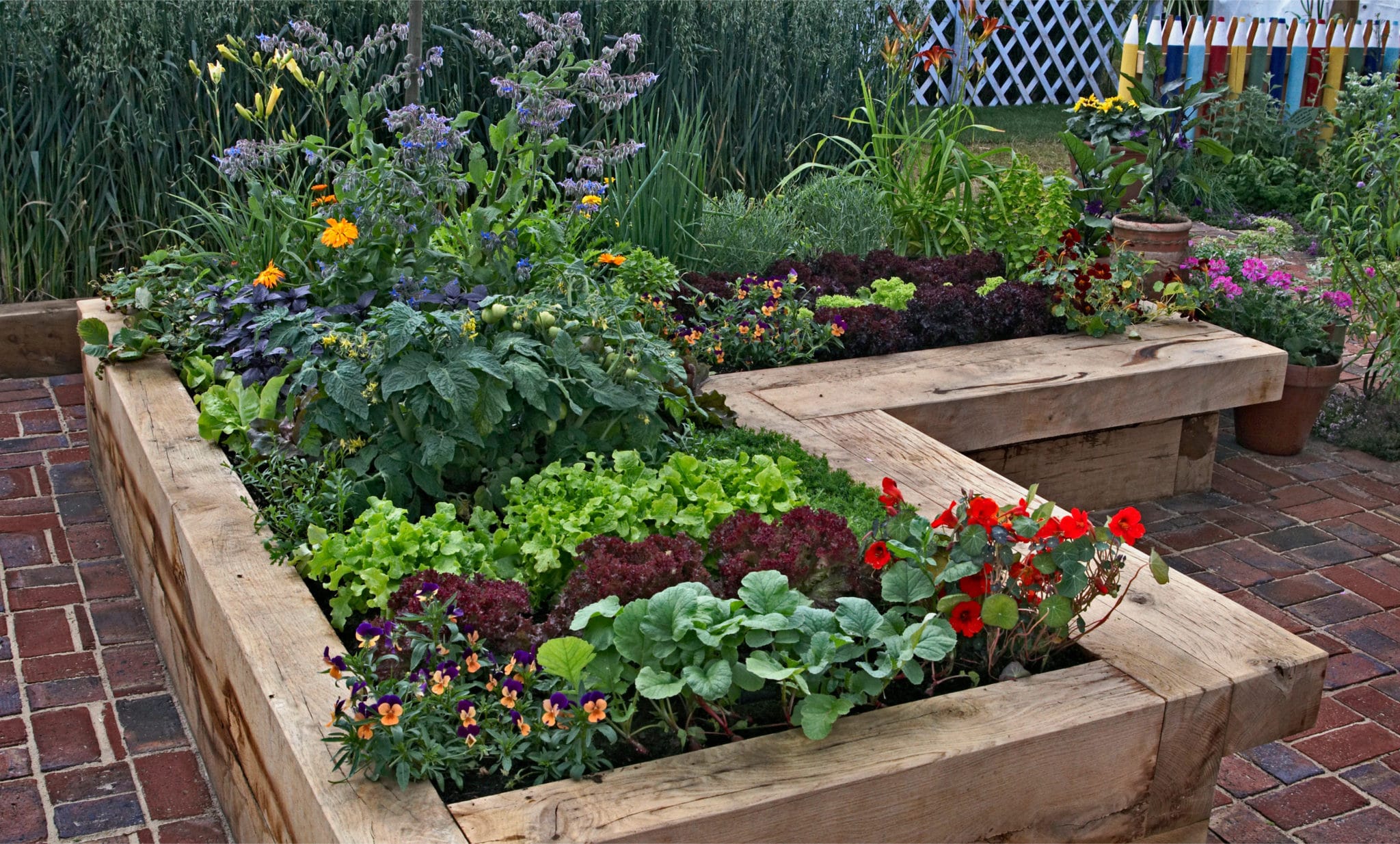If you want to be successful at planting and growing plants, you have to determine the USDA hardiness zone of your area. That will help you know the climate in your location and the best plants to grow. Knowing Kentucky planting zones will help you decide the plants that can withstand the coldest temperatures.
Kentucky is located in the upland South and stretches into the Appalachia. It’s an excellent place to grow and cultivate plants. A large part of Kentucky is in USDA zone 6. The state receives an average extreme minimum temperature of -5 degrees F. But note that the westernmost part of this state is in zone 7.
The USDA hardiness zones mean the lowest temperature a particular climate receives. Kentucky receives just enough rain with occasional seasons of drought. This state is home to over 2,500 species, including many different beautiful trees and flowers.
Kentucky Hardiness Growing Zone

Kentucky offers a long growing season, starting in early April and ending in late October. Therefore, gardeners enjoy more than 200 days in this growing season. This allows them to grow several crops in one season.
Kentucky experiences a temperate climate. Therefore, farmers can plant some crops before the last spring frost. The last frost is usually towards the end of April to mid-May, while the first frost in Kentucky falls between mid-October and early November.
But note that in most cases, early frosts don’t damage hardy plants. So certain flowers and vegetables can survive during these gentle frosts.
Kentucky receives the ideal rainfall amounts that allows plants to grow 40-50 inches tall. But, there are times that the area experiences drought during the growing season. For this reason, you should always plan on watering your plants. During the drought season, you should supply more water.
Plants in zone 6 can handle -10 and 0 degrees F temperatures. This zone is further categorized into zones 6a and 6b, with a 5-degree temperature difference.
Perennial plants growing in zone 6a can thrive in temperatures of -10 and -5 degrees F. Those growing in zone 6b can survive temperatures of -5 and 0 degrees F.
We also talked about the southwestern part of Kentucky in zone 7. Here, the temperatures go below 0 degrees F. Plants in this zone can handle temperatures between 0-10 degrees F.
Kentucky Native Trees
Kentucky forests host more than 120 tree species. The tulip tree is the state tree of this area that grows between USDA hardiness zones 4-9. This deciduous tree usually produces flowers in May and June.
Other deciduous trees (those that shed leaves in winter) that grow in Kentucky include maples, oaks, birches, and magnolias. Note that the American sycamore, growing in zones 4-9, is the largest tree in North America that reaches a height of 100 feet. The tree also grows naturally in Kentucky forests.
Kentucky USDA zone 6 trees are mainly different conifers species. These trees are always green and produce needle-like leaves with cones. The conifers make up the pines, cypress, and yew tree families. The swamp-dwelling bald cypress is the only tree that’s not always green in Kentucky.
Grasses and Flowers in Kentucky
Various wildflower species grow in Kentucky, including the bloodroot that produces white flowers. The name bloodroot comes from the plant’s roots that are crimson or rhizome that produces red liquid when squeezed. Bloodroot blooms early and flowers during late winter and early spring.
Kentucky’s state flower is the goldenrod that grows in the hardiness zones 3-8. The plant produces yellow flowers in August and October. But note that this plant is also found in all other states except Arizona.
Other flowers growing in Kentucky are sunflowers, phlox, coneflowers, mildew, and Virginia bluebells.
Best Plants to Grow in the Kentucky Hardiness Zones
Here are plants that you can grow in Kentucky. However, note that this list doesn’t consider the soil or rainfall differences. Instead, it only recommends plants based on the temperature of Kentucky’s predominant hardiness zone.
That said, here are some of the best plants to grow in KY:
- Apples
- Asters
- Beans
- Bell peppers
- Cabbage
- Carrots
- Daffodils
- Eggplants
- Grapes
- Garlic
- Lettuce
- Marigold
- Okra
- Peas
- Pumpkins
- Raspberries
- Sage
- Wisteria
- Yarrow
- Zinnias
Kentucky Weather Patterns
Kentucky is among the places that experience all four weather seasons. It’s in the central part of the USA. Thus, it receives mild temperatures with hot and long summers and moderately cold winters.
The landscape’s look depends on the current season. For instance, the landscape is filled with bright colors and bluegrass during spring. Hot and lush summers often bring frequent thunderstorms and too much sun.
Fall is quite stunning as it’s when the leaves start to change. Fall foliage begins in mid-September and extends to mid-October.
Winter is often quiet since people are indoors because of the cold. Snow inches in Kentucky are about 11 inches during winter.
Kentucky mainly receives sufficient precipitation during most years. Therefore, making it an ideal place for growing plants. However, most gardeners still have a watering schedule to ensure that their plants never dehydrate.
Sometimes, the climate can be too wet or dry, hence affecting gardening. However, gardeners can overcome these weather conditions. Here is how:
In wet weather- when the climate is overly wet, ensure that you plan your garden correctly. It would be best to raise it so that it doesn’t stand in water for long. Also, remember to mix soil with compost and perlite to support drainage.
Additionally, start plants indoors, then take them out when they are established. And for plants growing in wet areas, frequently monitor them for infections. Cut off infected leaves immediately you spot them to prevent fungus from spreading.
In dry weather- during the dry climate, make sure that you water your plants regularly. A rule of the thumb is an inch of water every week. Also, remember to mulch the soil to prevent water from evaporating. Mulching also allows the soil to remain cool. And make sure to weed and deadhead frequently.

